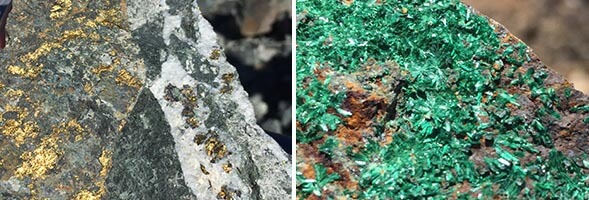
Our Projects
Overview
The Andean mountain range extending from central Chile-Argentina north to Peru-Ecuador and Colombia comprises a series of "stacked" metallogenic belts that represents the world's principal source of mined copper and a significant source of gold, molybdenum and silver. Copper occurs predominantly associated with large-scale, low-grade porphyry type deposits and to a lesser extent with IOCG and manto-type deposits.

In central-northern Chile, modern-era copper exploration and mining activity is primarily located in the high-altitude Palaeocene - Early Oligocene-age metallogenic provinces and includes giant deposits such as Escondida, Chuquicamata and El Salvador.
Despite the economic significance of these historic mines, replacement of reserves and resources is not keeping pace with production, mines themselves are becoming increasingly deeper and lower grade and consequently more costly in a physical environment that is already challenging in which to explore, develop and operate.
In contrast, the Early Cretaceous-age metallogenic belt that dominates the coastal region of northern Chile also hosts large scale copper deposits, such as Andacollo, and provides a significantly less challenging environment in which to explore and operate with excellent road, power and port infrastructure as well as local towns and communities. The coastal belt exhibits significant evidence of historical artisanal and small-scale mining and processing activity, however, has not attracted the same level of modern exploration interest or investment as the corresponding high-altitude belts.
GSC aims to focus its exploration efforts on the under-explored coastal belt and since 2017 has identified two key projects, Especularita and San Lorenzo, that meet its targeting criteria, namely; outcropping evidence of porphyry Cu-Au mineralisation and excellent access to infrastructure (roads, power, port, towns).
In September 2023, the Company added a third project to its portfolio, The Monti-Lithium project, located in the Salar de Atacama, Chile’s premium lithium producing region.

Chile is currently the world's second largest producer of lithium after Australia. Unlike Australia where lithium is recovered from spodumene-rich pegmatites, lithium in Chile is recovered from salt brine solutions located within and beneath high-altitude geographic depressions known as "salars" or salt lakes. In the Andean region of South America, lithium-rich salars occur in Bolivia, Argentina and Chile. Total reserves and resources of lithium calculated in Chile are estimated at 14.3 Mt Li3 with the Salar de Atacama being the largest lithium producing salar.
The Chilean government recognises the strategic importance of lithium to the country's economy and has recently moved to address a new model whereby companies wishing to extract and produce lithium are required to enter into contracts (CEOLs) with the State, negotiating with government companies Codelco or ENAMI.
Lithium is hosted in subterranean brine solutions which are pumped to the surface, where the lithium is extracted via evaporation processes producing a lithium carbonate (LiCO3) concentrate product. Preliminary exploration is now to include surface sampling and mapping programmes, geophysics and scout drilling.


